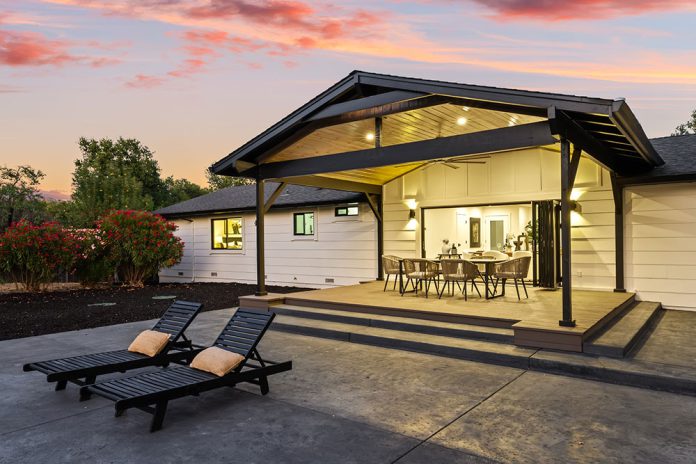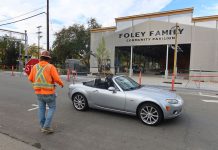
Healdsburg’s median home price dropped 18% in Q3 2025 to $976,000 from $1.199 million a year ago. Before interpreting this as a market in decline, consider what’s actually happening: This isn’t a story about falling values—it’s a story about which homes are selling.
The data reveals a dramatic market rebalancing, with entry-level properties surging while luxury sales stagnate. Understanding this shift is essential for anyone buying or selling in Healdsburg right now.
The Composition Effect
The 18% median price decline doesn’t reflect homes losing value—it reflects a fundamental change in what’s selling. Think of it this way: If luxury car sales collapse while economy car sales boom, the median vehicle price drops even though no individual car became cheaper.
That’s precisely what’s happening in Healdsburg. Sales under $1 million surged 83% year-over-year, while luxury closings over $2 million fell 10%. The result? More affordable homes dominate the sales mix, mathematically pulling down the median even as individual properties hold or gain value.
In fact, the sub-$1 million segment shows remarkable strength. These properties are selling at 94% of their current asking price—actually better than last year—and moving 21% faster, averaging just 71 days on market. The absorption rate nearly doubled from 28% to 51%, meaning more than half of available homes under $1 million are selling each month.
Q3 data reveals Healdsburg is really three separate markets operating under one name, each with its own dynamics and opportunities.
Under $1 Million: The Seller’s Market
This segment is experiencing genuine momentum that should give buyers pause about waiting for better deals. With sales up 83% and new listings down by more than half, inventory has tightened dramatically. The absorption rate of 51% represents the strongest performance across all price segments.
For buyers targeting this range—whether first-time Wine Country purchasers or investors—expect competition. Properties priced correctly are moving quickly, and the sold-to-original list price ratio actually improved 1.1% from last year, indicating sellers aren’t overreaching and buyers aren’t finding much negotiating room.
$1-2 Million: The Balanced Middle
This range represents what a healthy market looks like. Sales grew 47%, absorption improved 28% and inventory increased modestly by 18%. There’s clearly strong buyer demand, but enough supply to prevent the feeding frenzy happening below $1 million.
However, average days on market increased 49% to 89 days, suggesting buyers in this price range are conducting thorough due diligence and negotiating more carefully. When homes are priced right from the start, they’re finding buyers. But properties requiring significant work or updates will likely sit longer and need price adjustments.
Over $2 Million: The Buyer’s Opportunity
The luxury segment tells the most complex story. Closings dipped 10%, and the absorption rate fell slightly from 6.1% to 5.6%. Only one in 17 luxury homes is selling each month, confirming this remains firmly a buyer’s market.
But here’s where it gets interesting: Pending sales surged 140%. Yes, this represents just four homes going into contract, two of which were ours, so we need to be cautious about reading too much into it. Still, it suggests renewed interest in premium properties, even if these contracts haven’t yet converted to closed sales.
Average days on market for luxury properties actually improved dramatically, dropping 31% to 61 days. When luxury homes are priced right and appeal to today’s buyers, they move faster than mid-tier properties. However, the sold-to-original list price gap widened significantly by 4.4%—the largest drop across all segments. Luxury sellers often need to adjust expectations during negotiations.
Looking Ahead
As we move through the remainder of 2025, several trends bear watching. The combination of falling new listings and rising sales suggests inventory will remain constrained, particularly under $1 million. Even the luxury market may see tightening supply if those pending sales convert and inspire more buyer confidence.
For buyers across all segments, being prepared with financing, clear criteria and realistic expectations remains crucial. For sellers, the market is clearly active, but pricing strategy matters more than ever. The 7% gap between original asking and final sale prices tells us that success goes to those who price based on recent comparable sales rather than aspirational thinking.
The median price decline will grab headlines, but the real story is market transformation. Healdsburg isn’t becoming less expensive—it’s becoming more accessible to buyers in the entry-level and mid-tier segments while luxury buyers exercise patience and negotiating leverage.
David Hargreaves is a co-founder of BruingtonHargreaves / W Real Estate. Its weekly real estate newsletter, ‘Sonoma County Insider,’ is available at news.bruingtonhargreaves.com.









The 600 square foot shack on a 2,000 square foot lot on our block, sold for $705k in April. Insanity!